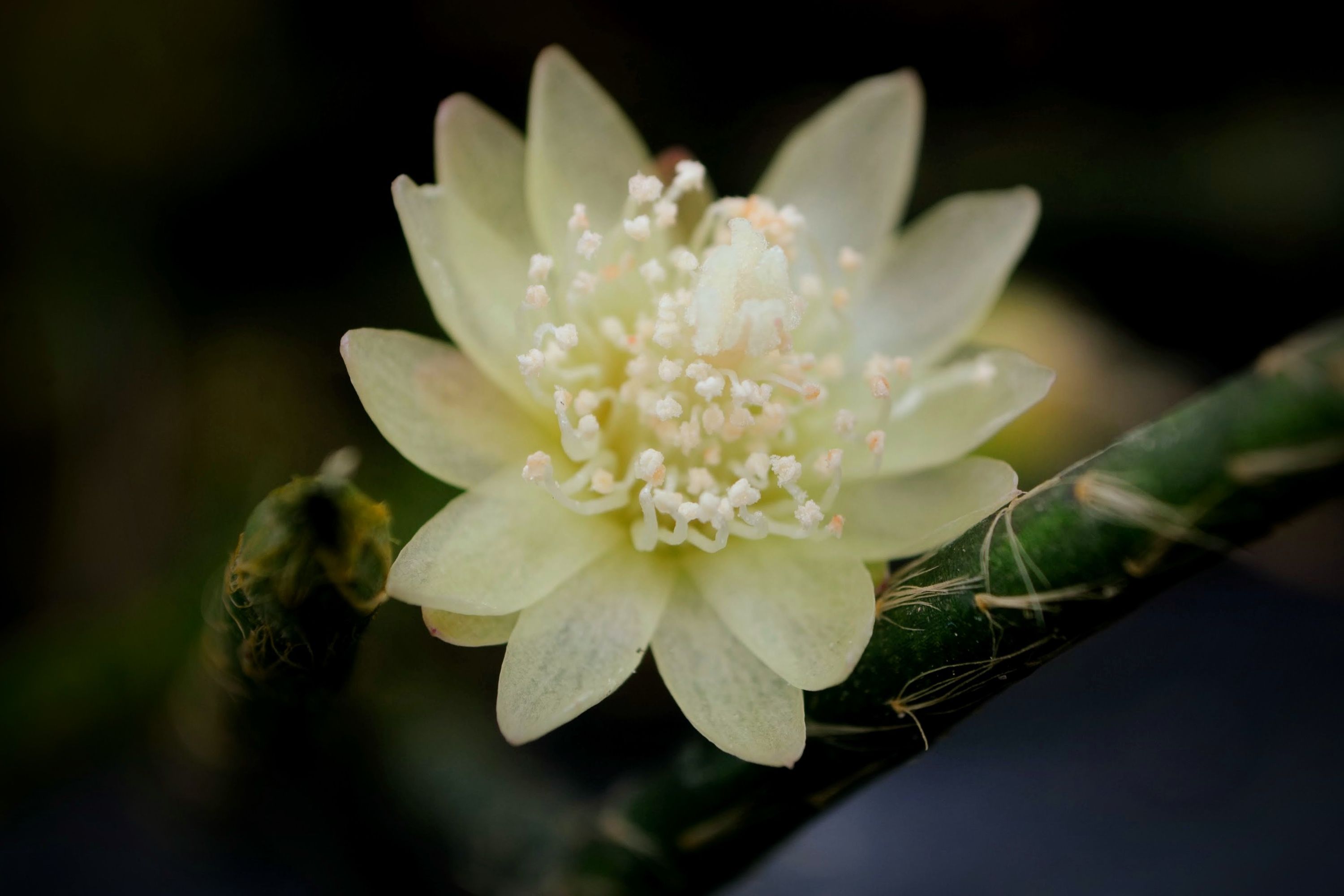Hairy-fruited wickerware cactus
(Rhipsalis pilocarpa)

Description
Rhipsalis pilocarpa, the hairy-fruited wickerware cactus, is a species of flowering plant in the cactus family that is endemic to Brazil. Scarce in the wild, it is known only in a small number of isolated locations. Its status is listed as “vulnerable” by the IUCN Red List. However, it is cultivated as an ornamental houseplant and as such has gained the Royal Horticultural Society’s Award of Garden Merit. In the wild Rhipsalis pilocarpa is an epiphyte, using a host tree for support but not parasitising or otherwise harming its host. Growing to 50 cm (20 in) tall and broad, its slim cylindrical stems are at first erect, becoming pendent with short straight branches arranged in whorls. The stems are crassulent, segmented and potentially dividing after each segment. It is one of the Rhipsalis in which the spines are still visible, especially on the young stems. It grows as a small epiphytic shrub with initially upright and later hanging shoots. The dirty gray-green shoots are slender cylindrical, completely turning, up to 4 inches long and 0.6 inches in diameter. At the top, they branch into whorls. The 8 to 10 almost always pronounced ribs are finely striped in the longitudinal and transverse direction. The green, somewhat woolly areoles are occasionally purplish. From them arise 3 to 10 gray to white, bristle-like thorns. The fragrant, white, terminal flowers appear alone or in pairs and reach a diameter of 2.5 to 4 centimeters. The pericarp is covered with bristle-like spines. The wine-red, berry-shaped fruits are spherical and studded with bristle-like spines. They have a length and a diameter of about 12 millimeters. The fruits contain quite large, black seeds. It has been shown that viviparity exists in this species, that is, the seed can germinate very early, while it is still in the fruit attached to the mother plant. Relatively easy to cultivate, R. pilocarpa grows best in partial shade, imitating its natural environment. It is particularly suitable as a hanging plant. With a minimum temperature of 10 °C (50 °F) it requires the protection of glass in temperate locations, at least during the winter months. The plant thrives acidic soil, good light and well drained (e.g. 2 part peat moss, 2 for 1 part of sand, with small bark chips added to increase the drainage and as a carbon source in a period of growth).
Taxonomic tree:







